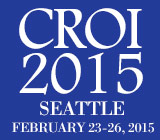 Canadian research suggests that rolling out Truvada (tenofovir/emtricitabine) as pre-exposure prophylaxis (PrEP) to prevent HIV would save money even if the cost to treat the virus drops in the future, aidsmap reports. Researchers compared the estimated costs of PrEP use with the lifetime cost of treating HIV if an individual acquires the virus at age 30, which is the average age of acquisition in Quebec. (The research is based on data from Quebec and Ontario.) They used a PrEP efficacy of 44 percent in their calculations, as was found in the iPrEx trial. However, their modeling was based on the intercourse-based dosing protocol of the IPERGAY trial, which was recently revealed to have an 86 percent efficacy. Consequently, this paper vastly underestimates the cost-saving nature of PrEP in Canada.
Canadian research suggests that rolling out Truvada (tenofovir/emtricitabine) as pre-exposure prophylaxis (PrEP) to prevent HIV would save money even if the cost to treat the virus drops in the future, aidsmap reports. Researchers compared the estimated costs of PrEP use with the lifetime cost of treating HIV if an individual acquires the virus at age 30, which is the average age of acquisition in Quebec. (The research is based on data from Quebec and Ontario.) They used a PrEP efficacy of 44 percent in their calculations, as was found in the iPrEx trial. However, their modeling was based on the intercourse-based dosing protocol of the IPERGAY trial, which was recently revealed to have an 86 percent efficacy. Consequently, this paper vastly underestimates the cost-saving nature of PrEP in Canada.
The researchers published their findings in the Canadian Journal of Infectious Diseases and Medical Microbiology in advance of the 2015 Conference on Retroviruses and Opportunistic Infections (CROI) in Seattle.
The investigators assumed that the cost per year for PrEP—including the cost of Truvada and blood tests, clinic staff wages, the economic impact of missed work for clinic visits, and free condoms—was 12,000 Canadian dollars. Assuming an individual starts HIV treatment immediately after contracting the virus, the lifetime cost for treatment, using the cheapest available regimen, would be CA$1.44 million. Then, factoring in the estimate that 52 people (according to iPrEx) would need to take PrEP for one year to prevent one infection, the researchers calculated that an averted infection would cost CA$621,000. Consequently, PrEP saves CA$819,000 for each infection averted.
After factoring in the possibility that HIV treatment costs may fall in the future, the researchers found that PrEP would likely lose its cost-saving status. However, considering that the number needed to treat to avert one HIV infection in the IPERGAY trial was just 18 people, and that in the PROUD study it was 13, PrEP should still save money even if there are substantial discounts in the future cost of HIV treatment. Furthermore, the researchers based their calculation on the notion that individuals would take PrEP every day. But if they followed the patterns of the participants of the IPERGAY trial, their Truvada use would be cut in half, further shaving down PrEP’s overall costs.
To read the aidsmap story, click here.
To read the study abstract, click here.
Advertisement
Advertisement
Advertisement






3 Comments
3 Comments